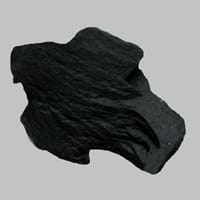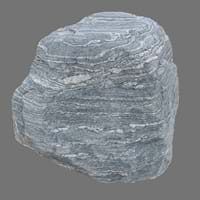Definition
Lignite is a soft brownish coal which shows traces of plants and is intermediate between bituminous coal and peat
Migmatite is typically a granitic rock within a metamorphic host rock which is composed of two intermingled but distinguishable components
Origin
France
Southern Alps, France
Discoverer
Unknown
Jakob Sederholm
Etymology
From French, Latin lignum wood + -ite1
From the Greek word migma which means a mixture
Class
Sedimentary Rocks
Metamorphic Rocks
Sub-Class
Durable Rock, Soft Rock
Durable Rock, Medium Hardness Rock
Group
Not Applicable
Not Applicable
Other Categories
Coarse Grained Rock, Fine Grained Rock, Medium Grained Rock, Opaque Rock
Coarse Grained Rock, Fine Grained Rock, Medium Grained Rock, Opaque Rock
Texture
Amorphous, Glassy
Foliated
Color
Black, Brown, Dark Brown, Grey, Light to Dark Grey
Black, Bluish - Grey, Brown, Brown- Black, Dark Greenish - Grey, Dark Grey to Black
Durability
Durable
Durable
Appearance
Veined or Pebbled
Dull, Banded and Foilated
Interior Uses
Not Yet Used
Countertops, Flooring, Kitchens
Exterior Uses
Not Yet Used
As Building Stone, As Facing Stone
Other Architectural Uses
Not Yet Used
Curbing
Construction Industry
for Road Aggregate, Steel Production
As Dimension Stone, Cement Manufacture, for Road Aggregate, Making natural cement
Medical Industry
Not Yet Used
Not Yet Used
Antiquity Uses
Not Yet Used
Artifacts
Commercial Uses
Electricity Generation
Cemetery Markers, Jewelry, Tombstones, Used to manufracture paperweights and bookends
Types
Xyloid Lignite or Fossil Wood and Compact Lignite or Perfect Lignite
Diatexites and Metatexites
Features
Generally rough to touch, Helps in production of Heat and Electricity, Used as fossil fuel
Generally rough to touch, Is one of the oldest rock
Archaeological Significance
Monuments
Not Yet Used
Not Yet Used
Famous Monuments
Not Applicable
Not Applicable
Sculpture
Not Yet Used
Not Yet Used
Famous Sculptures
Not Applicable
Not Applicable
Figurines
Not Yet Used
Not Yet Used
Formation
Coal formation takes place due to accumulation of plant debris in a swamp environment. The Coal formation process continues, as peat turns into lignite brown or black coal at increasing heat and pressure.
Migmatites form by high temperature regional and thermal metamorphism of protolith rocks where rocks melt partially due to high temperature.
Mineral Content
Not Available
Biotite, Chlorite, Feldspar, Garnet, Graphite, Hornblade, Micas, Muscovite or Illite, Quartz, Quartzite, Silica, Zircon
Compound Content
Carbon, Hydrogen, Nitrogen, Oxygen, Sulphur
Aluminium Oxide, NaCl, CaO, Carbon Dioxide, Iron(III) Oxide, FeO, Potassium Oxide, Magnesium Carbonate, MgO, MnO, Phosphorus Pentoxide, Silicon Dioxide, Titanium Dioxide
Types of Metamorphism
Not Applicable
Burial Metamorphism, Cataclastic Metamorphism, Regional Metamorphism
Types of Weathering
Biological Weathering, Chemical Weathering, Mechanical Weathering
Biological Weathering, Chemical Weathering, Mechanical Weathering
Types of Erosion
Chemical Erosion, Water Erosion, Wind Erosion
Chemical Erosion, Glacier Erosion, Water Erosion, Wind Erosion
Grain Size
Medium to Fine Coarse Grained
Medium to Fine Coarse Grained
Fracture
Conchoidal
Irregular
Porosity
Highly Porous
Very Less Porous
Luster
Dull to Vitreous to Submetallic
Dull to Pearly to Subvitreous
Cleavage
Non-Existent
Poor
Toughness
Not Available
1.2
Specific Gravity
1.1-1.4
2.65-2.75
Transparency
Opaque
Opaque
Density
800-801 g/cm3
Not Available
Specific Heat Capacity
Not Available
Resistance
Heat Resistant
Heat Resistant, Pressure Resistant
Deposits in Eastern Continents
Asia
Bangladesh, Burma, Cambodia, China, India, Indonesia, Kazakhstan, Malaysia, Mongolia, Pakistan, Turkey, Vietnam
China, India, Iran, Iraq, Kazakhstan, Kyrgyzstan, Mongolia, Russia
Africa
Botswana, Kenya, Morocco, Mozambique, South Africa, Tanzania
Cameroon, Ethiopia, Ghana, Kenya, Madagascar, Morocco, Mozambique, Namibia, Nigeria, Tanzania, Togo
Europe
Belgium, Bulgaria, England, France, Germany, Greece, Hungary, Kosovo, Netherlands, Norway, Poland, Romania, Serbia, Slovakia, Slovenia, The Czech Republic, Ukraine, United Kingdom
Albania, Austria, Bosnia and Herzegovina, Finland, France, Georgia, Germany, Hungary, Italy, Kosovo, Monaco, Norway, Poland, Romania, Serbia, Slovakia, Slovenia, Sweden, Switzerland, Ukraine, United Kingdom
Others
Not Yet Found
Not Yet Found
Deposits in Western Continents
North America
Canada, Mexico, USA
Canada, Costa Rica, Cuba, Mexico, Panama, USA
South America
Brazil, Chile, Colombia, Venezuela
Argentina, Bolivia, Brazil, Chile, Colombia, Ecuador, Peru, Venezuela
Deposits in Oceania Continent
Australia
New South Wales, Queensland, Victoria
New South Wales, New Zealand, Queensland, Victoria










